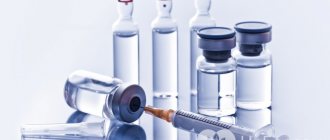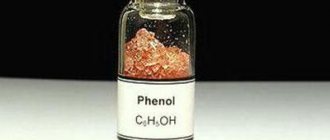Interesting dishes are prepared from oysters in different countries of the world. For some they are a familiar product, but for others they are a delicacy. Oyster poisoning may be a consequence of improper preparation technology or excessive consumption.
Seafood contains valuable nutrients that have a positive effect on the functioning of the body. But the peculiarities of the oysters’ life cycle require the filtration of seawater, which is why dangerous substances get inside the mollusks. To prevent damage to humans by them, you must follow the rules for preparing dishes from oysters.
Causes of poisoning
Seafood poisoning can occur for a number of reasons, the occurrence of which must be avoided in advance. Only a responsible approach to the storage, preparation and consumption of seafood guarantees an enjoyable meal and the elimination of subsequent diseases. Oyster poisoning in most cases occurs for a number of the following reasons:
- The product was stored in a warehouse or store improperly - operating technologies were violated, the expiration date had passed, or requirements were violated during packaging or canning. All this entails serious consequences for a person, which can lead to intoxication and additional diseases.
- Salmonella and other dangerous bacteria can be found in any seafood. It is often difficult to detect a pest in a product purchased in a store. Usually, oysters are checked before preservation and packaging, but negligence at the enterprise leads to the development of dangerous diseases and infections.
- Any seafood is a complete source of protein, therefore, if you consume oysters excessively, a real overdose of the beneficial element can occur. In this case, the human digestive system is not able to cope with large amounts of the substance, and all functions of the stomach and related organs are significantly affected.
Preventive measures
- Purchasing fresh products from bona fide and trusted suppliers.
- Storing shellfish in the refrigerator without breaking the cold chain.
- Proper processing of oysters.
- Refusal of seafood dishes if you have a history of allergies.
If signs of poisoning appear a short time after eating oysters, seek medical help immediately. Therapeutic measures will eliminate the symptoms of intoxication and reduce the risk of deterioration in health.
Oysters
Oyster meat is popular with a large number of people around the world. You can meet these sea creatures in their pure form or in the form of a salad in almost any restaurant, and their taste will not leave anyone indifferent. Despite this, it is quite easy to get poisoned by this product, so you should use it with extreme caution.
Shellfish meat contains a large amount of phosphatides, polyunsaturated acids and elements important for the human body. They are practically priceless in their composition; they help replenish the balance of substances in the body, strengthen the general condition and help important systems function normally. However, the delicacy also has a downside.
Oysters are a kind of sea filter. They pass large volumes of seawater through themselves, and some toxic algae leave their particles inside the mollusks. Poisoning with such a product can occur either through excessive consumption or when eating a raw product without proper processing.
Unfortunately, symptoms appear even when the products are consumed in a restaurant setting. The fact is that oysters, even under such conditions, do not undergo full laboratory analysis, and due to the large volume of use of the product, it is much easier to get poisoned from restaurant food than from store food.
Symptoms
Any intoxication of the body is dangerous for the human body. Eating oysters and other seafood can result in dire consequences, including serious poisoning. Signs appear both a few hours after consumption and a day later. It all depends on how much of the poisonous product was eaten, the degree of intoxication and the reasons why this poisoning occurred.
Unpleasant signs by which seafood intoxication can be recognized can be recognized even by an inexperienced person:
- Significant nausea, turning into vomiting.
- Palpable dizziness and a state of general weakness of the body.
- Spasms in the intestinal area, bloating.
- Increased pain in the stomach area.
- Prolonged diarrhea, which practically does not alleviate the condition of the victim.
- Darkening of discharge from the bladder.
- Increase in general body temperature to critical values.
The peculiarity of oyster poisoning is that the victim develops additional symptoms, such as seizures and other neurological disorders.
Restaurant mistakes
It’s not only amateurs who cook oysters at home on a whim who make mistakes. Even the best chefs in restaurants are not immune to mistakes. Shellfish dishes are often prepared with violations of technology, not to mention the desire of the owners of food outlets to save on food. Therefore, restaurant kitchens often end up with cheap, low-grade shellfish that were grown in the vicinity of industrial facilities.
Read more An employee rented a car on a business trip
Cheap oysters are usually harvested improperly. Experts know that shellfish should only be collected at low tide. When the tide is in, sea shellfish are poisonous.
Ideally, shellfish should be purchased alive and kept in a specially equipped aquarium until cooked, providing them with proper care. But not every restaurant goes to such additional costs.
Thus, oyster poisoning can also occur after visiting a restaurant , especially if you tried them for the first time and really cannot use special cutlery for eating oysters.
If the shell is damaged, the fragments that get inside can cause severe digestive disorders.
First aid
If the victim shows the first signs of serious seafood poisoning, he or she must be treated immediately. In this case, a mandatory action is to call specialists who will determine the exact extent of the disease and provide appropriate treatment.
In order to help the patient, you need to perform the following simple steps:
- First of all, it is important to remove the toxic substance from the body. In this case, ordinary warm water will come to the rescue, which should be consumed in large quantities. In this case, the main goal is to induce vomiting, which will alleviate the condition of the victim and remove the remaining product from the body.
- To enhance the effect of gastric lavage, a weak solution of soda or potassium permanganate is often used. It is important to understand that the concentration of the substance must be at an acceptable level, otherwise it will not be possible to achieve the desired effect.
- The patient must be provided with complete rest. To do this, you need to put him to bed in a well-ventilated room - you will have to open all the windows and doors in order to provide access to fresh air.
- If the general body temperature increases, it is necessary to give the victim antipyretics. In this case, medications should be used only those that do not affect the stomach and will not aggravate the patient’s well-being.
Diet
For a certain period after serious intoxication, the patient will need a specialized diet. Only a specialist who is familiar with the characteristics of a particular person’s body and has studied the picture of poisoning in detail can prescribe the quantity and types of dishes. It is imperative to adhere to such a diet, only in this way can the stomach and other organs return to normal activity and perform their functions properly.
In this case, the order of food introduction will be as follows:
- First of all, liquid porridges are introduced, in which the addition of butter and other flavor enhancers is highly discouraged.
- Chicken broths and veal broths will be the next step in product introduction.
- Apples and sweet bananas will help the body recover.
- Unsweetened crackers or unflavored cookies are also introduced into the diet gradually.
- Liquids based on dried fruits and rose hips will help the patient return to normal faster.
Video: oysters are on the list of the most dangerous foods.
Treatment
It matters how much time passes from the moment of poisoning. Serious consequences - a blow to the immune system, stress on the liver, changes in the nervous system. Delayed treatment leads to coma and even death.
In the clinic
In case of serious poisoning, drugs are administered intravenously to cleanse the blood, liver and replenish fluid loss. For allergies, an antihistamine is administered intravenously. To relieve swelling of the larynx, adrenaline is injected intramuscularly.
In a clinical setting, studies will be carried out to identify the specific cause of poisoning - whether it is a toxin or a bacterium. Based on the results, the doctor will prescribe treatment that quickly restores the body.
At home
You can help yourself at home by following a diet. You will have to give up fried, floury, spicy and salty foods. No fast food, soda or coffee. Herbal teas will help cleanse the body.
Green tea is a beneficial antioxidant. On the first day of treatment, it is better to refuse solid food, focusing on drinking plenty of fluids.
On the second day, chicken broth, porridge, boiled or steamed vegetables are allowed.
Set aside fermented milk products and yoghurts for 1-2 days. Bananas are the preferred fruit. Citrus fruits and apples should also be excluded from the diet for now.
On the path to recovery, taking medications to restore intestinal microflora is useful. Allergic skin reactions (rash and itching) are treated with hydrocortisone ointments. Eye and nasal drops are used against irritation of the mucous membranes of the eyes and nose.
Prevention
Any poisoning has an extremely negative impact on human health and leaves behind a lot of unpleasant consequences. It is much easier to adhere to preventive measures and almost completely eliminate the possibility of intoxication. To prevent seafood poisoning from occurring, you must adhere to the following rules:
- When purchasing oysters in a store, always pay attention to the expiration dates. If the expiration date has expired or will expire soon, it is recommended not to purchase the product.
- The product must be well packaged and the integrity of the packaging must not be damaged. Otherwise, there is a risk of poisoning.
- Follow the rules for storing oysters and under no circumstances leave them in the open air at high temperatures - the product spoils very quickly.
- In a restaurant, be sure to check the quality of each piece of product, this way you will avoid intoxication.
- Do not visit questionable establishments or order dishes that are unfamiliar to you.
All these simple rules will help not only to prevent poisoning, but also to enjoy your favorite seafood to the fullest.
Seafood is rich in protein; it has appeared on our market relatively recently. They have an unusual taste, you can prepare a huge number of dishes from them and decorate any holiday table. They can be purchased at the store in the frozen food section or pickled, and can be ordered at almost any restaurant.
Oysters are rich not only in protein, but also in microelements. However, there is a risk of getting poisoned by oysters. And this risk is great. An oyster is a shellfish. It lives on the seabed and bottom and is engaged in passing through its shell all the remains of the vital activity of marine inhabitants. This constitutes his diet.
Main danger
All kinds of bacteria immediately begin to multiply in caught seafood. Can you get poisoned by oysters? How does this happen?
When eating oysters, there is a risk of one of the bacteria or toxins entering the patient's body.
Some are very dangerous for the human body. Among the most dangerous there are three types:
They are the most harmful to the human body. Oyster poisoning, the symptoms of which depend on the type of virus, poses a great danger to human health and life.
Norovirus
This virus causes a severe intestinal infection. It has a high rate of spread. It is transmitted through food, water and contact between a sick person and a healthy person, through household items.
A patient with norovirus is able to transmit it to people around him within two days from the moment of infection. The main symptoms are:
- nausea;
- vomit;
- diarrhea (sometimes only vomiting, without diarrhea);
- general weakness;
- headache.
Symptoms usually disappear within three days from the moment of infection. However, in case of severe disease, treatment may be needed for two weeks. There is no cure for norovirus.
Halophilesis
The causative agent of this infection is the bacterium Vibrio vulnificus. This is a representative of vibrios that reproduce mainly in salty habitats.
Severe food poisoning occurs when eating seafood contaminated with vibrios or foods that have been exposed to seawater. This disease can also be acquired by swallowing water in open bodies of water while swimming.
Halophilic vibrios are extremely temperature resistant. They tolerate drying and smoking very well. However, halophilesis is non-zero. Re-infection can only be achieved by repeated consumption of contaminated seafood.
The first symptoms of halophilosis appear after 6-8 hours. These include:
- nausea;
- severe, unbearable abdominal pain;
- headache;
- severe diarrhea.
Campylobacteriosis
This bacterium enters the patient's body with food. It is one of the causes of diarrhea and gastroenteritis.
Treatment in most cases consists of normalizing the body’s water-salt balance and antimicrobial therapy. However, if you are poisoned by oysters, there is a risk of getting non-microbial damage. The so-called Phycotoxicosis.
This disease is caused by eating phycotoxins from bacteria and seaweed. This disease can manifest itself within a few hours, in the form of acute poisoning, or after a while. Since oysters can be carriers of four varieties of phycotosins, the symptoms can vary significantly.
PSP - toxin
This group of toxin enters the oyster’s body with food. Without harming the oysters, the poison can accumulate in them in huge quantities.
Just 180 mcg of this toxin leads to moderate poisoning. And from 400 mcg can cause death. PSP toxin is a type of paralytic poison.
- After 5-30 minutes, a tingling sensation is felt in the gums, lips and tongue;
- In cases of severe and moderate poisoning, numbness of the tips of the fingers and feet, as well as the hands, is observed. After 2 hours, this numbness spreads to the legs, arms and neck.
- Dizziness and feeling of floating in the air.
- Nausea.
- Loss of coordination, rapid heartbeat.
- Labored breathing.
- Paralysis of body muscles.
Groups of phytotoxins that can cause poisoning
It is important to know that, due to the nature of their diet, oysters can contain four groups of phytotoxins, poisoning with which causes different symptoms.
PSP
Paralytic toxins, the most dangerous of which is saxitoxin. 180 mcg of such toxins provoke a moderate degree of intoxication, and if more than 400 mcg enters the body, death occurs. You should know how long it takes for signs of intoxication to appear. Symptoms may appear as early as 5-30 minutes after eating poisoned oysters and include:
Signs of a quality oyster
Before buying and eating oysters, you should master some simple knowledge that will minimize the risk of eating this seafood.
There are signs by which you can identify a high-quality live oyster:
- a live oyster smells of the fresh scent of seawater;
- the oyster valves are tightly closed and difficult to open;
- a fresh oyster is heavy in weight because of the water inside it;
- when opening the sink, the water should be clear;
- When the oyster comes into contact with the knife, it contracts.
Also, when serving oysters in a restaurant, you can check them as follows. You can drizzle fresh lemon juice on the oysters. Clams do not like acidic environments and shrink.
If there is no reaction. It is not recommended to eat this dish. Most likely, the oysters have been dead for a long time and the process of formation of pathogenic bacteria is in full swing. This simple instruction will help you avoid unwanted consequences.
Right choice
Features of a Trusted Product:
- The fresh smell of the sea;
- Tightly compressed shell valves;
- Tangible weight means fullness of water, and therefore life;
- Transparency of water in the sink;
- The oyster reacts to a stimulus.
If you touch the sensitive receptor cilia, the contractile reflex is clearly visible. This also means that the mollusk is alive. But not for long. This state of oysters is exemplary for cooking.
You should be careful when serving food in a restaurant. If you visit a low-class establishment, it is better not to order anything with oysters. If the restaurant claims to be fashionable, it would be a good idea to note the presentation of the dish. If you have any suspicions, do not hesitate to call the administrator and the chef. Your own health and the well-being of other visitors are at stake.
First aid for oyster poisoning
If poisoning cannot be avoided, it is important to remember that at the first appearance of symptoms of poisoning, you should consult a doctor. Stopping vomiting and diarrhea is not recommended. Only a doctor can prescribe drugs with such a spectrum of action.
Before emergency medical services arrive, it is necessary to rinse the stomach. And drink water in small sips constantly in order to prevent dehydration. All subsequent treatment will be prescribed within the walls of the hospital. The patient must be on bed rest and diet.
To avoid poisoning, you should purchase oysters from certified establishments and stores. Do not hesitate to demand a certificate of quality, because the price is your health. The photos and videos in this article will help you visually familiarize yourself with the topic.
When medical attention or treatment is required
Contacting a specialist if symptoms of intoxication appear is mandatory. The doctor needs to be told about all the symptoms, after which he will prescribe the necessary measures and medications. Intoxication is treated comprehensively; drugs and methods of therapy are selected depending on the individual characteristics of the clinical case.
It is important to strictly follow all instructions prescribed by your doctor. You should not interrupt the course of treatment without the advice of a specialist. Relief may be temporary, and interrupted treatment can cause a deterioration in the patient's condition.
The journey from raw material to table
Before reaching the consumer’s table, any type of seafood goes through several stages: extraction, further procurement, primary storage at the direct supplier, delivery, storage at a catering establishment, processing, preparation. Therefore, to minimize risks, control is needed at each stage.
Possibility of intoxication
Sometimes situations occur when an oyster becomes not only a decoration on the menu, but also a cause of poisoning. What are the risks that make such a situation likely?
The algae that oysters feed on may be contaminated
Ecology
The anthropogenic impact on the World Ocean is expressed by pollution with petroleum products, radioactive elements, industrial waste, pesticides, oil and heavy metals.
The toxic elements that make up these substances are absorbed into algae, which are the nutritional base of mollusks.
Improper storage
At times, aquariums in public catering facilities do not properly fulfill their intended purpose, thereby disrupting the storage regime.
This contributes to changes in the organoleptic qualities of fish raw materials: marine inhabitants from different aquatic ecosystems located in the same tank, having certain parameters of the aquatic environment (degree of salinity and water temperature, flow speed, etc.) lose their unique taste and softness.
Dishonesty of the supplier
Often, in the race for profit, the supplier does not discard dead shellfish. Dead shellfish should not end up on the client’s table, because the rotting process that begins in them contributes to the spread of dangerous microorganisms.
Poor quality products
Dead or contaminated oysters can cause poisoning
Infected, they are even more dangerous than the dead. Intestinal and food intoxications, both microbial and non-microbial, have serious consequences.
Foodborne infections
Oyster poisoning ranks 4th among toxemia with other products, according to medical statistics. The manifestation of symptoms is somewhat different from one another, depending on whether it was an intestinal infection or food intoxication.
Intestinal
The causative agent is Norovirus (one of the enteroviruses). A person who is poisoned by contaminated food can infect another with the virus within 48 hours.
If the infection proceeds without complications, then the symptoms of the disease disappear after three days. In severe cases, treatment lasts up to 2 weeks.
There is no vaccine for such an infection.
Microbial
Halophilosis is an infection caused by Vibrio parahaemolyticus. This is a representative of halophilic vibrios that live in salty waters. These vibrios are heat-resistant, live and develop at 13-40 degrees, a soybean concentration of 5-30% and a pH of the environment from 5 to 9.6. Therefore, if the optimal norm of temperature indicators during the delivery and sale of products is violated, the number of virulent microorganisms increases significantly.
Is it possible to get poisoned by oysters and what are the symptoms?
Oysters are a product with an exclusive taste, considered a world delicacy, living in salt water and consumed in the ancient world. But sometimes an encounter with these mollusks may not bring pleasure, but will end in joyless symptoms of oyster poisoning.
Is it possible to get poisoned by oysters?
Oysters are a tricky product. You may feel sick from the drink that accompanies the oyster. It is worth remembering that these shellfish contain a lot of easily digestible protein. But cases of oyster food poisoning are not uncommon. Cases of deaths are recorded.
Women who are pregnant should not eat live oysters.
Types of poisoning
The main causative agents of poisoning are viruses and bacteria.
- Norovirus, most often oyster poisoning occurs due to this pathogen;
- Campylobacteriosis, a bacterium of animal origin, is most common among warm-blooded animals whose products are consumed as food, but is also seen in shellfish;
- Vibrio vulnificus;
- An overdose of iodine or protein depends on how much was consumed;
- Halophilosis.
The overdose is related to the composition of the oyster.
Just over a quarter of people on Earth are allergic to sea protein, and overeating can lead to allergies.
What are the symptoms
The incubation period ranges from 1 to 3 days. The main indicator of the virus is the release of a toxin, which affects the loss of taste. A day later, severe dehydration sets in. Associated manifestations: fever and other symptoms of food poisoning.
Incubation period: up to 5 days, but the process can take up to 10 days. Manifested by abdominal pain, diarrhea, high fever, migraine, flatulence. Complications can only begin in young children, old people, or if a person suffers from another serious illness (immunodeficiency syndrome or the like).
Most often, a person gets this type of virus from improperly preparing oysters. The incubation period is up to 1 day. You can record weakness, nausea (less often), stool, and fever.
Body temperature reaches 39 degrees, high blood pressure, loss of appetite, tremors in the limbs, insomnia, feeling of lack of air, fever.
The incubation period is a quarter of a day. There is a sharp pain in the abdominal area, and symptoms of intoxication appear. It is especially dangerous due to the possibility of severe dehydration of the body.
One of the consequences of swimming in contaminated salt water can be Halophilosis.
How long does it take to appear
Norovirus: Symptoms appear after an incubation period. Symptoms of intoxication may occur more than once. This period lasts up to 3 days. Campylobacter: all manifestations of the bacterium end after 5 days. Vibrio vulnificus: a severe intestinal disorder that makes itself felt at the end of the incubation period. The symptoms disappear chaotically within 3 days.
Due to the rapid reproduction of vibrio, symptoms of halophilosis may begin to appear after 6 hours.
Reasons for the unsuitability of oysters
- Premature death of oysters;
- The presence of cosmetic defects on the skeleton of the mollusk;
- Color and softness-hardness of the mollusk;
- Incorrect opening of the oyster skeleton, as a result of which particles of the shell can get inside;
- Ecology of the place where the oyster was caught.
There is a statement that the ideal time for oysters is when the name of the month has the letter “r”, that is, in the summer you should refrain from adding oysters to your diet. But in modern reality, when refrigeration machines have appeared, this rule is losing its relevance.
One of the important characteristics of a living oyster is the tightly connected valves.
Conclusion
Shellfish is a tasty and rich dish; you shouldn’t deprive yourself of such a delicacy. To prevent poisoning from occurring, you just need to maintain hygiene and carefully approach the issue of product quality and preparation technology. In this case, poisoning can be avoided easily and simply.
( 1 rating, average 5 out of 5 )
Source: https://moreprodukt.info/ustritsy/mozhno-li-otravitsya
What to do
High fever often requires hospitalization
Mussels and oysters are types of bivalves. They pass and filter seawater, which may contain toxic algae. Since these mollusks are inhabitants of the same ecosystem, their nutritional base is the same. Therefore, mussel poisoning has similar symptoms and treatment.
First aid
In case of seafood poisoning, it is necessary to call a team of medical workers. Before their arrival, you need to perform a number of standard actions:
- flush the stomach by ensuring plenty of fluids;
- induce artificial vomiting;
- in the absence of diarrhea, give laxatives (magnesium sulfate) and adsorbents (activated carbon or enterosgel).
Health care
Further treatment in a hospital setting is necessary if, against the background of actions to provide primary care, negative dynamics and further development of symptoms occur:
- frequent vomiting;
- persistent fever and increased body temperature above 38-39 degrees;
- decrease in pressure;
- painful urination;
- blood spots in vomit and feces;
- double vision, imbalance in movement, loss of orientation in space.
Observe temperature conditions and storage periods
Prevention of poisoning cases
When buying oysters, you should ask for a quality certificate for the product. There is no need to purchase them from little-known suppliers or spontaneous trading platforms.
Follow the cooking technology and recipe. Do not keep food raw for longer than expected; observe storage temperature conditions.
Possible complications
Serious complications that may occur after oyster intoxication:
- Disturbances in the functioning of the central nervous system: paralysis, deterioration of concentration and memory.
- Hypovolemic and anaphylactic shock.
- Development of inflammatory diseases of the digestive tract: gastritis, colitis.
- Acute renal failure.
- Brain swelling and paralysis of the respiratory center.
To prevent the development of complications, seek medical help at the first manifestations of poisoning: nausea, vomiting, diarrhea, fever.











